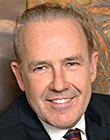Speed and ServiceNovember 12, 2024
This Combination Will Drive Your Business By John TschohlSpeed and Service
This Combination Will Drive Your Business John Tschohl is the founder and president of the Service Quality Institute — the global leader in customer service — with operations in more than 40 countries. He is considered one of the world’s foremost authorities on all aspects of customer service and has written several training programs, including “Speed,” which is also available in Spanish, Greek, Russian and Chinese. His monthly strategic newsletter is available online at no charge at customer-service.com. He can also be reached on Facebook, LinkedIn and Twitter.
John Tschohl is the founder and president of the Service Quality Institute — the global leader in customer service — with operations in more than 40 countries. He is considered one of the world’s foremost authorities on all aspects of customer service and has written several training programs, including “Speed,” which is also available in Spanish, Greek, Russian and Chinese. His monthly strategic newsletter is available online at no charge at customer-service.com. He can also be reached on Facebook, LinkedIn and Twitter.
Speed is one of the most strategic elements a company can use to attract and retain customers and to drive their revenues. What do I mean when I talk about speed?
Speed is dramatically reducing the amount of time needed to complete a task by altering factors such as empowerment, the mindset of employees, and organizational policies and systems.
Lack of empowerment is the major barrier to speed. It’s not just a speed bump on the road; it’s a 20-car pileup positioned directly in your path. Empowerment allows employees to make quick decisions that benefit customers — internal and external — without having to get permission from someone higher up the corporate ladder. It’s critical that you eliminate policies that prevent empowerment.
Another barrier to speed is the mindset of employees, which for most of them is set on one speed: slow. You must create a different mindset — a willingness to actively look for ways to perform quickly. If it normally takes five days to complete a task, do it in five hours.
The speed technique involves several steps. Organize what you need and evaluate how much time you will need to complete the project. Prioritize by breaking the project down into a series of smaller tasks that will allow you to manage your time and to focus on the details while understanding the “big picture.” Don’t procrastinate. Manage your time in a way that factors in barriers and allows for dealing with problems.
It’s imperative, however, that you don’t sacrifice quality while pursuing speed. If you have to go back and correct mistakes, you have slowed down the entire process.
CEOs are also often barriers to speed. The only thing that motivates them is money. What they fail to realize is how dramatically speed — combined with extraordinary customer service — can impact sales and profits. Amazon is the definition of speed and service. It has more than 1.6 million employees, and in 2023, had net sales of $574.8 billion, an increase of $60.8 billion from 2021.
Apple, the Mayo Clinic and Costco are three more great examples of companies realizing the rewards of combining customer service and speed. Apple profits $100 billion every year because of its speed and service. When I have a problem or need advice on one of my Apple products, I don’t need to drive to the store and wait in line. I simply call Apple, explain what I need, and an employee solves the problem in minutes.
The Mayo Clinic provides a better customer experience than any other healthcare organization in the world. Thanks to its focus on speed, quality and customer service, it had $17.9 billion in revenues last year. It also includes a human element; you can call the clinic and a live person will answer the phone on the first ring 24 hours a day, seven days a week.
Costco has never lost sight of its focus on the customer experience. Its fiscal year sales ending September 1 of this year were $249.6 billion, an increase of $11.9 billion over last year. Costco has incredible quality, prices and speed, with two people at each checkout counter.
Speed can generate incredible growth and dramatically increase sales and profits. In the words of race car driver Mario Andretti: “If everything seems under control, you’re just not going fast enough.”
Shift into high gear and give your customers more than they ask for — and faster than they ask for it. C&IT










